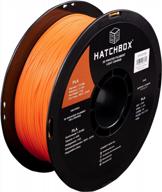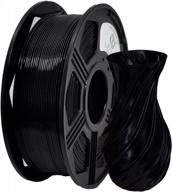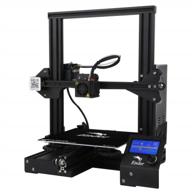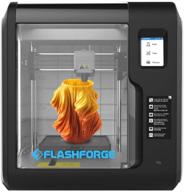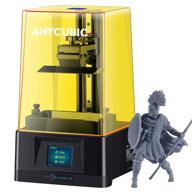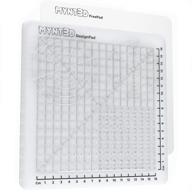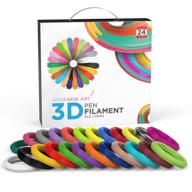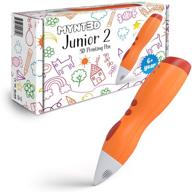Introduction to 3D Printing Pens
3D printing pens are handheld devices that allow you to draw 3D objects freehand. They extrude heated plastic that cools and solidifies, letting you "3D sketch" in midair. Here's an overview of how they work and their key features.
What Are 3D Printing Pens?
A 3D printing pen looks like a bulkier version of a regular pen or glue gun. It contains a plastic filament that gets melted and extruded through a nozzle tip. As the plastic cools, it hardens, allowing you to draw shapes and structures.
Main Components
- Nozzle tip - deposits melted plastic
- Heater - melts the plastic filament
- Motors - drive the filament through the heated nozzle
- Controls - buttons for temperature, speed etc
- Body - contains internal components and houses filament
How Do They Work?
- Filament is loaded into the pen's body chamber
- The heater melts the plastic filament
- Motors drive the filament through the nozzle
- Molten plastic comes out of the nozzle tip
- As it cools, the plastic solidifies into the structure you created
Similar products
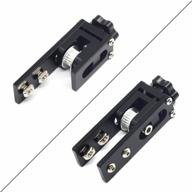

50 Review

Key Features and Benefits
| Feature | Benefits |
|---|---|
| Portability | Create 3D structures anywhere, no bulky printer required |
| Intuitive | Draw in midair like a regular pen |
| Versatile | Make free-form creations or intricate designs |
With a 3D pen, you can unleash your creativity! It allows limitless on-the-fly 3D drafting and is a great tool for artists, designers, engineers, and hobbyists alike.
What Are 3D Printing Pens and How Do They Work?
A 3D printing pen is a handheld tool that allows you to create 3D objects by depositing melted plastic in layers. Here's an in-depth look at what they are and how the technology works.
Main Components
A 3D pen has several key parts:
- Nozzle tip - dispenses the melted plastic filament
- Heater - heats the plastic to a molten state
- Motors - drive the filament through the hot nozzle
- Controls - buttons to adjust speed, temperature, etc
- Body - houses internal parts and filament
Filament Types
3D pens use plastic filament, typically 1.75mm in diameter. Common materials include:
- PLA - Polylactic acid, biodegradable plastic
- ABS - Acrylonitrile butadiene styrene, a durable plastic
- Flexibles - Bendable materials like NinjaFlex
- Wood, metal, glow-in-the-dark, and other specialty filaments
Another interesting products
How Do 3D Pens Work?
- Filament is loaded into the pen's chamber
- The heater melts the plastic to a liquid state
- Motors drive the filament through the hot nozzle
- Molten plastic comes out of the nozzle tip
- It rapidly cools and hardens into a solid plastic
By controlling the flow of plastic, you can create 3D structures and shapes as the material solidifies. The process is similar to regular 3D printing but allows freehand design.
Speed and Temperature Controls
Settings allow you to adjust the speed and temperature based on the filament type for optimal flow and hardness.
Basic Technique
The key is to move the pen smoothly and steadily as the plastic solidifies. Going too fast can result in drips and weak layers. Precise control takes practice but allows amazing creative possibilities!
With an understanding of how they work, 3D pens can be an invaluable tool for creative expression in 3D!
Key Features and Benefits of 3D Printing Pens
3D printing pens allow you to draw in plastic filament that cools and solidifies into 3D creations. Here are some of their useful features and advantages.
Portability
Unlike desktop 3D printers, a handheld 3D pen is a portable tool you can use anywhere for on-the-go designing and modeling. It easily fits into a bag or backpack.
Intuitiveness
The interface and controls are designed to be user-friendly. With practice, drawing in 3D becomes intuitive and natural.
Versatility
With a 3D pen you can create an endless variety of objects - artistic sculptures, jewelry, prototypes, scale models, and more. The possibilities are limited only by your imagination.
Top products in 💻 3D Printing Pens
Speed
Compared to 3D printers which can take hours to print objects, a 3D pen allows rapid design and fabrication in minutes.
Freedom of Design
There are no size restrictions and you can draw organic, asymmetric, or intricate shapes that are difficult with conventional 3D printing.
Accuracy
With precision nozzle tips and pressure sensitive controls, many 3D pens allow surprisingly detailed and accurate designing capability.
Cost Effectiveness
At $50 - $150, a 3D pen provides an affordable entry point for trying out basic 3D design vs the cost of a 3D printer.
Safety Features
Quality 3D pens have built-in sensors and alerts if the temperature exceeds safe thresholds during heated operation.
With professional features packed into an easy-to-use handheld device, 3D pens are an exciting tool for unleashing creativity in the third dimension.
Top Brands and Models of 3D Printing Pens
Several companies now manufacture 3D printing pens with unique capabilities. Here are some of the top brands and noteworthy models available.
3Doodler
3Doodler launched the first 3D printing pen in 2013. Their pens stand out for interchangeable nozzle tips, simple controls, and a slim, ergonomic body.
- 3Doodler Create+ - A great entry-level option with fast heating and adjustable speed controls.
- 3Doodler Pro - Advanced professional model with an LCD screen and fine detail nozzles.
MYNT3D
MYNT3D is known for high-precision 3D pens perfect for intricate detailing and electronics prototyping.
- Professional - Sturdy metal body with advanced heating and speed controls.
- Hobby - Durable plastic pen with knurled grip for easy handling.
Scribbler
Scribbler 3D pens feature striking sleek designs and innovative features like twist controls and LED heating indicators.
- Scribbler V3 - Slim and lightweight model great for kids.
- Scribbler Duo - Features dual nozzle with two color blending.
Tecboss
Tecboss focuses on affordability without sacrificing quality. Their pens work with all filament types.
- TecBoss Basic - Budget model with standard features.
- TecBoss Pro - Advanced controls and LCD display for precise designing.
The range of 3D pens on the market provides options at any experience level and budget. Consider your needs and creative goals to choose the right model.
What Are The Benefits Of Using A 3D Printing Pen??
Using a 3D printing pen has several benefits, including:
What Are Some Popular Brands Of 3D Printing Pens??
Here are some popular brands of 3D printing pens:
Note that some of the brands mentioned in the search results may have discontinued certain models of their 3D printing pens.





